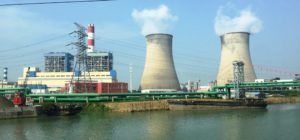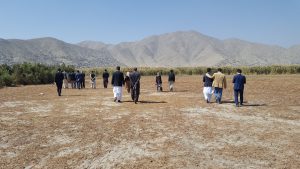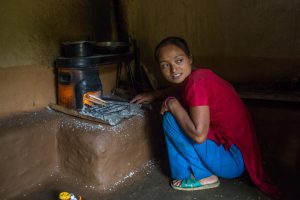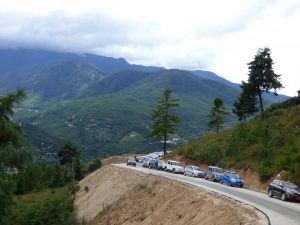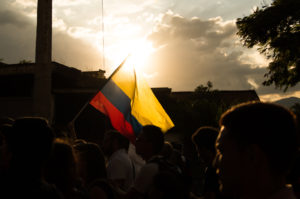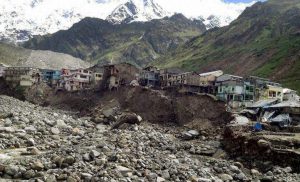Ever since it was announced, the USD 2.2 billion Rampal project, jointly implemented by the Power Development Board of Bangladesh and the National Thermal Power Corporation of India, has been beset by controversy. Able to provide 1,320 megawatts (MW) of electricity, it will be the largest coal plant in Bangladesh – although others are also planned with China.
Mohammad Hossain, the director general of the Power Cell, which functions under Bangladesh’s Ministry of Power, Energy and Mineral Resources talked to thethirdpole.net about why the government is going ahead with the controversial project near the Sundarbans, the world’s largest single-track mangrove.
Kamran Reza Chowdhury (KRC): What is the current status of the Rampal power plant project?
Mohammad Hossain (MH): We awarded the contract in May 2016. The civil works (infrastructure) have started. Land development was done much earlier, the boundary walls are built, and the main buildings are under construction. After the civil works are over, the construction of the main plant will follow.
KRC: What is the time frame for the completion of the project?
MH: As per the revised time frame, we are expecting that the first unit of the plant (660 MW) will start producing electricity by December 2019. We will need another six months to one year to complete the second unit.
KRC: How much of Bangladesh’s energy demand will the Rampal power plant meet?
MH: It will only meet 1,320 MW out of our future national demand (the current generation capacity is 15,500 MW). Strategically, the plant is aimed at meeting the electricity demand of the underprivileged and underdeveloped southwestern Khulna region. The people of this region have been left out of the development process. The plant will accelerate the pace of development in the region.
KRC: Will the electricity generated be dedicated to the southwestern part?
MH: Two big rivers, the Padma and the Jamuna, have divided our electricity transmission and distribution system. The transmission of electricity from the eastern part to the west is challenging. The number of power plants in the southwestern part is few as the gas fields [which account for most of Bangladesh’s electricity generation] are in the east. Until 2009, 96% of electricity generation was coming from gas-fed plants. Now 62% electricity comes from gas.
Read: Will Bangladesh’s future be coal black?
KRC: What is Bangladesh’s total electricity generation right now?
MH: Our grid generates 13,500 MW while total power generation capacity is 15,500 MW. Some 2,000 MW is produced by captive power plants built by the industrialists to meet their own electricity demand, and are not connected to the national transmission and distribution [systems].
KRC: Environmentalists at home and abroad have protested against the construction of the power plant near the Sundarbans, alleging that the project would destroy this world heritage site.
MH: This (Rampal) is the second coal power plant in Bangladesh. The first power plant was initiated in Boropukuria (in Dinajpur) in 2003. This plant [is based on] old technology, called sub-critical, which is hugely polluting. Then came better, super-critical, technology. Now, we have third generation technology, ultra super-critical, which we are using for the Rampal power plant. The boundary of the Sundarbans is 14 kilometres from the plant site. It is a safe distance. There are instances around the world where coal-based power plants operate near world heritage sites or national parks or in the heart of cities.
The Sundarbans is associated with the emotion of 160 million people in Bangladesh. This is also an emotional issue to the prime minister. It was during her tenure that Unesco recognised the Sundarbans as a world heritage site in 1997. Our prime minister has [been recognised with a] Champion of the Earth award [the UN’s highest environmental accolade]. She would not allow damage to the environment, ecology and the Sundarbans.
Keeping the concerns of the environmentalists in mind, we have revisited our plant and adopted additional precautionary measures. We have upgraded the technology from super-critical to ultra super-critical. Initially de-sulphurisation capture (capturing harmful sulphur dioxide) was not part of the design. Initiation of the technology has increased the cost of the project by another 15%.
KRC: What are the differences between sub-critical, super-critical and ultra super-critical technologies?
MH: A sub-critical plant’s efficiency ranges between 20% and 25%, a super-critical plant’s efficiency is between 30% and 35%, and the efficiency of an ultra super-critical plant is more than 40%. A power plant with ultra super critical technology will burn half of the coal that plants with sub-critical technology do. More coal burning means more pollution.
KRC: How would you address mercury pollution from the power plant?
MH: Mercury in coal does not burn [instead it] will mix with fly ash. We are adopting slurry disposal of the fly ash. The fly ash will be made compact like stone so that the mercury will not spread.
KRC: Unesco objected to the Rampal project. Have they lifted their objection?
MH: Unesco had three observations. First they said not to implement the project. Second, they urged us to shift the project to another place, not near the Sundarbans. And third, they told us that they would include the Sundarbans in the endangered list if the plant was implemented. They also objected to our environment impact assessment report on the project. But in their final report, they have not observed that the plant should be stopped or the project be shifted or that they would include the Sundarbans in the endangered list. Now, they have suggested we do a strategic environment assessment of the whole area. This means that they have encouraged us to address [issues] in case the assessment study found some [negative] impacts.
KRC: When are you going to do the strategic environment assessment?
MH: The terms of reference of the study have been finalised, and it will published soon.
KRC: How are you going to deal with pollution caused by coal transport?
MH: The lighterage vessels carrying coal to the plant will [be up to] international standards. Coal transshipment from the mother vessels to the lighterage vessels will be done via closed conveyer belt. This means that the coal will not fall in the sea. The barges will be covered vessels. So, there is no possibility of coal spillage.
KRC: Coal is a dirty source of energy. We are switching to coal when the whole world is abandoning it. Why?
MH: We have not switched to coal. Rather you can say we are introducing coal. Developed countries have been using coal for decades. Once they used sub-critical and super-critical technology, now they use ultra super-critical technology. Around the world some 56% of the electricity comes from coal burning. We are introducing coal at a time when coal is no longer dirty. We are not doing anything wrong; we are on the right track. The whole world has been polluting through coal burning for the last 50-100 years.
Read: The uncertain death of king coal
KRC: Which institutional mechanisms would ensure use of the ultra super-critical technology and that the additional precautionary measures will be adopted in the plant?
MH: We will introduce an online system to monitor pollution. Anybody can log in to the online monitoring system and check the levels of nitrogen oxide and sulphur dioxide. Number two, there will be a national committee of experts; they will oversee whether the restrictions we have told are being complied.
KRC: Was there no better place than Rampal to build the plant?
MH: Bangladesh is a land scarce country. If you accommodate the population of the whole of Europe on a landmass half the size of France, what will be the condition? Bangladesh’s population situation is like that. We need land for agriculture, housing and other purposes. Studying all the probable options, Rampal was selected as the best option in terms of the transportation of coal, using the land. and the resettlement of people. We have to produce 40,000 MW of electricity by 2030 and 60,000 MW by 2041 to become a middle-income country. We have limited options. If we want to increase our GDP by 1% we will have to increase electricity generation by 1.5% percent.
KRC: Our future energy is going to be coal?
MH: The interesting thing is that our per capita carbon emission is 0.4 metric tonnes while the world average is something around 10 tonnes; we are not a contributor to carbon emissions. We are not a polluter. We are not justifying emissions. To reduce dependency on coal, we are importing LNG (liquefied natural gas). We are also promoting renewable sources (for clean energy).
![<p>Mohammad Hossain, the Director General of the Power Cell, which functions under the Bangladeshi ministry of power, energy and mineral resources [image by: Kamran Reza Chowdhury] </p>](https://dialogue.earth/content/uploads/2017/09/MH.jpg)

![View of Pul Doda from the road above, a half submerged structures of a mosque, a temple and a few houses can be seen [image by: Majod Maqbool]](https://dialogue.earth/content/uploads/2017/10/A-view-of-the-Pul-Doda-area-from-the-road-above.-The-half-submerged-structures-of-a-mosque-a-temple-and-a-few-houses-can-be-seen-here.-300x184.jpg)
